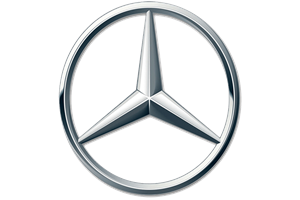


This edition of the Mercedes E Class 55K AMG is the 5 speed / Auto version and was first brought out in 2003. This was at around the same time as the introduction of the 2004 Westfield Sport 2000S and the 2004 Mitsubishi Lancer Evo VIII MR FQ 400.This particular Mercedes E Class has a 5439cc Naturally Aspirated Petrol powerplant with 8 cylinders in a V formation.
The E Class shares its Petrol V8 engine configuration with the likes of the 2023 Dodge Challenger SRT Demon 170 and the 2023 Ferrari SF 90 XX Spider 4.0 V8 Turbo. If you're looking for other fast cars which share the E Class's Rear Wheel Drive, Saloon combination then how about the 1982 Fiat X1/9 1.5 8V or the 1965 Aston-Martin DB6 1965.
Weighing in at 1760 kgs (3880 lbs) this makes the Mercedes E Class 55K AMG in the same weight category as the 2022 Volkswagen-VW Arteon 2.0T AWD or the give or take 50kg.
In terms of power the 5439cc 24V V8 engine produces 469 bhp (349 kW) @ 6100 rpm similar to the 2023 Porsche Cayenne S 4.0 V8 Turbo (467 bhp) or the 2023 Porsche Boxster Spyder RS 4.0 982 (493 bhp).
The Naturally Aspirated V8 throws out 516 lb-ft (699.6 Nm) @ 2650 rpm placing it with cars of similar torque performance figures such as the 2023 Lotus Eletre 603 bhp (524 lb-ft) or the 2023 Lamborghini Revuelto 6.5 V12 Petrol Hybrid (535 lb-ft).
If one combines the weight with power or torque performance for the Mercedes E Class you can get a better idea of it's real world performance.
![Chevrolet Corvette 6.2 V8 2d - [2007] image Chevrolet Corvette 6.2 V8 2d - [2007] image](/editionimages/184.jpg)
The 2007 Chevrolet Corvette 6.2 V8 2d (291.4 bhp per ton) has similar Bhp Per Ton stats as the Mercedes E Class.
The Mercedes E Class has a Power to weight ratio of 266.4 bhp per ton and 293.1 lb-ft per ton. Bhp Per Ton figures of the 2003 E Class competing with the 2007 Chevrolet Corvette 6.2 V8 2d (291.4 bhp per ton) or the 2016 Aston-Martin Vantage 4.7 V8 GT8 (291.3 bhp per ton).
If you agree with the late great Carroll Shelby then arguably an even better indicator of potential performance, Torque. Use weight as well and you end up with - Torque per ton, with the Mercedes E Class generating around 293.1 lb-ft per ton. If you're curious as to what other cars have as much torque to weight then look no further than the 2009 Aston-Martin Vanquish 5.9 V12 RS (318.1 lb-ft per ton) or the 2000 Porsche 911 GT2 996 (317.3 lb-ft per ton).
With a 0-60mph time of 4.50 secs or a 0-100km/h (0-62mph) of 4.6 secs, this made the Mercedes E Class 55K AMG as fast as the 2022 BMW i7 xDrive60 (4.50 secs) the 2021 Rolls-Royce Ghost Black Badge 6.6 V12 Twin turbo (4.50 secs) the 2021 BMW 2 Series M240i xDrive Cabrio 3.0 Turbo F23 (4.50 secs) the or the 2021 BMW 2 Series M240i xDrive 3.0 Turbo F23 (4.50 secs). This Mercedes E Class 55K AMG is also faster than the 2023 Porsche Cayenne Coupe E-Hybrid 3.0 V6 Turbo (4.60 secs) the 2023 Porsche Cayenne E-Hybrid 3.0 V6 Turbo (4.60 secs) the 2021 BMW 2 Series M240i 3.0 Cabrio Turbo F23 (4.60 secs) the and the 2020 Audi A3 S3 Saloon (4.60 secs).
![Mercedes E Class 60 AMG 6.0 V8 W124 - [1993] image Mercedes E Class 60 AMG 6.0 V8 W124 - [1993] image](/editionimages/1340.jpg)
Quarter Mile time is a close race between the E Class and the 1993 Mercedes E Class 60 AMG 6.0 V8 W124
When talking about the performance of the Mercedes E Class on the drag strip it can reach a quarter mile in an estimated 12.82 secs @ 106.7 mph. Similar performance down the quarter mile can be found with the the 1993 Mercedes E Class 60 AMG 6.0 V8 W124 (12.80 secs), the 2019 Toyota Supra GR RZ 3.0 Turbo (12.81 secs), and the 2017 BMW X6 xDrive50i 4.4 V8 F16 (12.81 secs).
Modern performance cars are often artificially restricted to 155mph. The 2003 version of the Mercedes E Class 55K AMG has a maximum speed of 155mph.
If maxing out your car on the AutoBahn is your thing and you're wondering what's faster than the 2003 Mercedes E Class 55K AMG then how about the 2024 Ford Mustang Dark Horse 5.0 V8 (166 mph), the 2022 Ford Mustang GT 5.0 V8 (166 mph), or the 2021 Ford Mustang Mach 1 5.0 V8 (166 mph).









Audi 200 2.2T 20v Quattro
Engine: Turbo Petrol | 2226cc 20v St5
Top Speed: 150 mph
0-60mph: 6.30 seconds

BMW 3 Series M3 Evolution E36
Engine: Naturally Aspirated Petrol | 3201cc 24v St6
Top Speed: 249.4 kph
0-100kph: 5.5 seconds



















